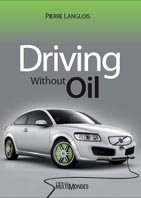
Illustration - The livestock industry emits more greenhouse gases than all vehicles on the planet. (photo: Wikimedia Commons)
When we talk about biofuels, people are afraid of losing land to feed people and say that it makes no sense. But let us try to be objective and to look at our land management on the planet from a broader perspective and see if we could not do better.
First, according to a report of the United Nations published in 2006, 70% of farmland in the world are dedicated to the livestock industry [H. Steinfeld et al., Livestock's long shadow, Food and Agriculture Organization (FAO), Rome 2006]! These lands are divided into pastures and cultivated areas to feed livestock (33% of cultivated land on the planet).
Moreover, according to the same report, the livestock industry is responsible for 15% to 18% of anthropogenic emissions of greenhouse gases (GHG) expressed in CO2 equivalents. But what we need to know is that all road vehicles in the world are responsible of approximately 12% to 13% of greenhouse gas emissions (including GHGs to produce fuel). So, the livestock industry emits 50% more GHG than road vehicles!
Another factor to consider also is that one hectare of land (1 hectare = 2.47 acres) produces about 25 kg (55 pounds) of beef protein, whereas the same hectare can produce 400 kg (880 pounds) of vegetable protein with soy, 300 kg (660 pounds) of protein with rice and 150 kg (330 pounds) with wheat. Not to mention that to produce 1 kg (2.2 lbs) of beef, it takes more than 40,000 liters (10,566 US gallons) of water, which means more than 6000 liters (1,585 US gallons) of water for a steak of 150 grams (5.3 ounces) (see the website of the organization Compassion In World Farming www.ciwf.org.UK, in particular The report Global Benefits of Eating Less Meat, 2004)! Too much meat in our diet is therefore a blatant waste of our planet's resources in agricultural land and fresh water, not to mention other resources such as fossil fuels (natural gas for fertilizers and oil for machinery).
We must know these facts if we are to make informed decisions about the use of our farmland.
In my last book Driving without oil, I recommend to reduce our meat consumption by 15% (one day a week without meat). In doing so, it releases more agricultural land than necessary to produce biofuels equivalent to 5% of petroleum fuels currently used. Now, 5% that's all we need from energy crops to remove oil from the road transport (see previous post).
In closing, we must not forget that by reducing our consumption of meat to produce second generation biofuels, we DOUBLY reduce greenhouse gas emissions, since the livestock industry emits more than all vehicles on the road.





No comments:
Post a Comment